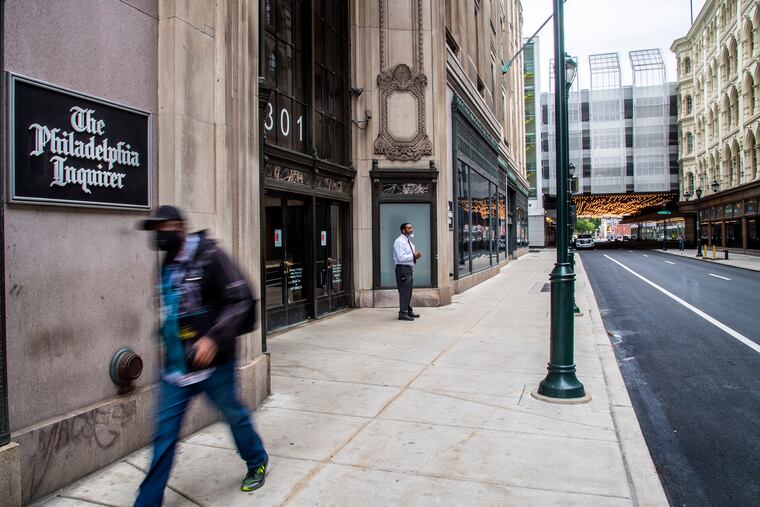The Inquirer’s look at itself described an organization that I didn’t recognize | Opinion
A former executive at the newspaper — one of the highest-ranking African Americans in the company's history — defends diversity efforts during his tenure.

The Philadelphia Inquirer should be commended for the lengthy self-examination of its hiring practices and coverage of the Black community. However, I barely recognized the institution portrayed in the story by Wesley Lowery.
I should know. I spent nearly a decade at the paper, first as vice president of operations for The Inquirer, the Daily News, and Philly.com. I was named publisher of the Daily News and later became associate publisher of The Inquirer, the Daily News, and Philly.com before retiring in 2016. I remain the highest-ranking African American to work at The Inquirer. As such, I have firsthand knowledge of the efforts made to diversify the staff and ensure our news coverage reflected the entire community.
During my tenure, The Inquirer was not a racist organization. I was recruited in 2006 from a Gannett-owned newspaper by Brian Tierney, who set out to change the culture and ensure it was inclusive. We brought in a human resources executive who tracked hiring in all departments and pushed for more diversity. However, we often ran into a roadblock when it came to retaining journalists of color in the newsroom because the union’s seniority rules meant that any layoffs would result in the last hired being the first let go.
» READ MORE: The Inquirer’s look at itself ignores the paper’s history of exposing racial injustice | Opinion
I continued to work for the paper after it was purchased by Gerry Lenfest. I can’t speak for other time periods, but during my tenure, I am proud of how often the newspaper’s coverage improved the lives of communities of color. For example, when I was publisher of the Daily News, the paper won a Pulitzer Prize in 2010 for its investigation of the Philadelphia Police Department’s rogue narcotics squad that preyed on vulnerable people of color.
In 2012, The Inquirer won a Pulitzer for a series of stories that detailed violence in the city’s public schools. An untold number of other stories benefited communities of color, while the papers endorsed the election of numerous African American officials, including Mayor Michael Nutter, who presided over a steep drop in the number of murders in the city.
While there is always room for improvement, Lowery glossed over the many people of color who have held top positions at both papers. For example, Michael Days became the editor of the Daily News in 2005, was later named the managing editor of The Inquirer, and then was promoted to vice president for diversity and inclusion. Sandra Long was appointed managing editor of The Inquirer in 2007, the same year Harold Jackson, a Pulitzer Prize winner, was promoted to editor of the editorial page. Anthony F. Cuffie became vice president in charge of regional advertising. Sandra Clark and Gabriel Escobar were both promoted to managing editor positions at The Inquirer in 2014.
» READ MORE: From the publisher of The Inquirer: An apology to Black Philadelphians and journalists
The recent self-flagellation began following the murder of George Floyd, which sparked Black Lives Matter protests that resulted in some buildings getting vandalized. The paper ran a story on A12 about the property damage under the headline: “Buildings Matter, Too.” While the headline was wrong, it should not have led to the resignation of the top editor of the paper.
The blowback then led to hiring Temple University to conduct an audit of The Inquirer’s content. The thrust of the audit is grounded in a flawed analysis that said the newsroom was nearly 75% white in a city where the white population is only 31%. The clear inference is spelled out in the headline on Lowery’s story: “Black City, White Paper.”
However, the Temple audit failed to consider that The Inquirer doesn’t just cover the city. Until the recent merger of the two papers, the Daily News largely covered the city, while The Inquirer had a more regional focus. As the biggest media company in the state, The Inquirer’s readership extends across three states throughout the Delaware Valley.
In fact, 75% of The Inquirer’s readers live in the Pennsylvania suburbs and South Jersey. Covering those areas is critical to maintaining and growing readership and advertising — which, of course, provides the revenue to support the business and fund a strong newsroom. As such, the demographic figures used to support the Temple audit are, at best, misleading.
Again, while there is always room for improvement, The Inquirer should get back to focusing on what it does best: holding people in power accountable, giving a voice to the voiceless, and covering the city, region, and state without fear or favor.
Mark J. Frisby is a former associate publisher of The Inquirer. He also served as publisher of the Philadelphia Daily News.